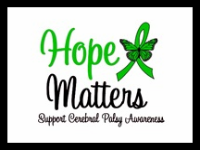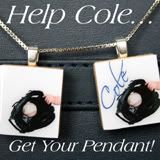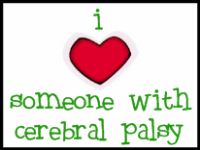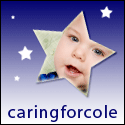- There is currently no cure for cerebral palsy and in most cases, it is not preventable. In over 50 years, treatments for CP have not progressed much at all. In fact, today, there remains little consensus among medical professionals regarding what causes CP or how best to treat it. Why do 800,000 or more Americans have CP, and yet we don’t know much more about what causes it or how to prevent it than we did a half century ago?
There are several different 'types' of Cerebral Palsy. The classification depends on the severity of her limitations, as well as what parts of the body and brain are affected.
These are the different types according to 4MyChild :
Spastic Cerebral Palsy
Spastic Cerebral Palsy is the most common diagnosis. If your child’s CP is “spastic,” her muscles are rigid and jerky, and she has difficulty getting around. There are three types of spastic Cerebral Palsy:
- Spastic diplegia — Your child’s leg and hip muscles are tight, and his legs cross at the knees, making it difficult to walk. This kind of movement is frequently referred to as “scissoring.”
- Spastic hemiplegia — Only one side of your child’s body is stiff. Her arms or hands might be more affected than her legs. On the affected side, her arm and leg may not develop normally. She may also require leg braces.
- Spastic quadriplegia — The severest of the three, spastic quadriplegia means that your child is more likely to have mental retardation if diagnosed as quadriplegia. His legs, arms, and body are affected. It will be difficult for him to walk and talk, and he may also experience seizures.
Athetoid Dyskinetic Cerebral Palsy
Athetoid dyskinetic is the second most frequently diagnosed type of Cerebral Palsy. Your child will have normal intelligence, but her body will be totally affected by muscle problems. Her muscle tone can be weak or tight, and she might have trouble walking, sitting, or speaking clearly. She may also have trouble controlling her facial muscles and therefore drool.
Ataxic Cerebral Palsy
This is the least diagnosed type of Cerebral Palsy. Your child will have trouble tying his shoes, buttoning his shirt, cutting with scissors, and doing other tasks that require fine motor skills. He might walk with his feet farther apart than normal and have trouble with his balance and coordination. Your child may also suffer from “intention tremors,” a shaking that begins with a voluntary movement. For example, your child may reach for a toy, and then his hand and arm will start to shake. As he gets closer to the toy, the tremor worsens.
Hypotonic Cerebral Palsy
Unlike with other types of CP, you will notice that your baby has muscle control problems early in life. Her head seems floppy, and she will not be able to control it when sitting up. Her motor skills will be developmentally delayed.
It is suspected that this type of Cerebral Palsy is caused by brain damage or malformations that occur while a baby’s brain is still developing.
Mixed Cerebral Palsy
If your child does not “fit” into one of the above diagnoses, your doctor will consider him “mixed.” This is quite common.
Congenital Cerebral Palsy
If your child is diagnosed with congenital Cerebral Palsy, be aware that this is not a “type” of palsy, but rather it is a term meaning “birth defect.” In other words, your child’s doctor is saying that he developed Cerebral Palsy during development. It is not a condition that your child inherited from you or your husband or partner. And it is not caused by a medical error.
Erb’s Palsy
If any type of Cerebral Palsy can be attributed to a birthing accident, it is Erb’s palsy (brachial plexus palsy). According to the National Institute of Neurological Disorders and Stroke:
Although injuries can occur at any time, many brachial plexus injuries happen when a baby’s shoulders become impacted during delivery and the brachial plexus nerves stretch or tear.
If your baby has Erb’s palsy, he will have no muscle control in his arm; the arm will be limp and have no feeling.
Based on the nerve area that is affected, there are four types of Erb’s Palsy:
- Avulsion — the nerve completely separates from the spine.
- Rupture — the nerve is torn throughout but not from the spine.
- Praxis/stretch — the nerve is damaged but not torn and could heal on its own.
- Neuroma — scar tissue from an injury puts pressure on the nerve.
Regardless of what 'type' of CP Cole has the treatment/therapy we provide for him is the same. Cole receives therapy every single day. He has two days of physical therapy, occupational therapy, speech therapy, swallow therapy and swim therapy. We will be trying to add hippotherapy this coming August.
We are very fortunate that Cole does not have to have a feeding tube (even though he can not eat solid table food, we can puree it for him) and we are thankful he does not have seizures. Both of these could complicate things even further for him.
If you want to learn more about Cerebral Palsy please visit Life of Logan where my friend Keri (his mother) is hosting a contest.
You could also show your support by spreading the awareness of cerebral palsy by adding this button to your blog...or one of the others over at Life of Logan.






Thanks for sharing more about CP. I really didn't know much about it before reading your blog about Cole.
ReplyDeleteSuper fabulous post! I just love seeing CP awareness being spread! Gives me the warm fuzzies!
ReplyDeleteI am going to be doing my post hopefully some time tomorrow.
ReplyDeleteLooking at that list I suddenly realize how my one son that seems like he "outgrew" his symptoms, really hasn't.
My son Henry, who will be 10 (gasp!) on Wednesday has Ataxic Cerebral Palsy. As a baby, he was very hypo, but with therapy, he made so much progress that you can barely tell anymore, aside from the fact that he can't write well, can't tie his shoes, still wets the bed, can't button or zipper...
Hmm, I didn't realize Erb's palsy fell under this header. Aria actually had an Erb's palsy due to a stuck shoulder. She couldn't move her left arm at all for several months after birth. By age one (with lots of PT at home) it was barely noticable. I am still waiting to see if she'll have weakness problems in sports when she's older.
ReplyDelete